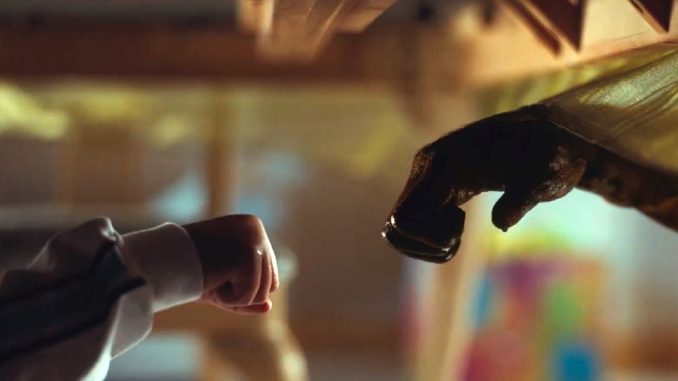Gordy Did Nothing Wrong

Nope opens with an off-screen conversation. It carries through the opening credits, a jubilant exchange between a group of people that suddenly turns sour. Screams become shrieks; shrieks become the guttural howls of a wild animal. The credits cut to a scene of chaos, what looks to be the empty soundstage for a television show taping. Empty, save for a small body on the stage, mostly concealed by a couch off to the side amidst the aftermath of maelstrom, and a chimpanzee. The body lies motionless on the ground with only a leg visible to the camera. There is a smattering of blood on the leg and the shoe, just like the blood masking the muzzle of the chimp dawdling around nearby, its fists slathered in gore. The animal is exhausted, but you get the sense that it’s not quite finished with its work.
![]()
In Nope, director Jordan Peele creates a horror film within a horror film. In his story about two Black Hollywood horse wranglers who lose their father to a mysterious, airborne accident (leading to the discovery that a menacing force hangs above the clouds looking for its next meal), Peele tells another story. It’s the story of an exploited animal that lashed out in fear, catalyzed death and tragedy, and paved the way for one of its victims to repeat the cycle of exploitation for the price of a ticket. It synthesizes the themes Peele is exploring with his third feature, including the state of modern movie-making, blockbusters and the cost of submitting to the Hollywood machine. And at the center of it all, the film’s guiding anchor, is a little chimpanzee: Gordy, who is innocent of his crimes.
Through Steven Yeun’s character, carnival huckster Ricky “Jupe” Park, we eventually gain the full context for Nope’s opening sequence. As a child, Jupe was an actor who starred in a fictional, Goonies-adjacent adventure in the ‘90s that launched his career in a way it didn’t quite for his co-stars. Jupe went on to star in a television sitcom in 1996 called Gordy’s Home, about a family who just so happened to have a friendly chimp as one its members. That is, until disaster struck in 1998. How did disaster strike? Emerald (Keke Palmer) certainly wants to know, after Jupe lets her and her brother OJ (Daniel Kaluuya) into his secret back room full of Gordy’s Home memorabilia—even some trinkets from the disastrous “Gordy’s Birthday” episode. The sibling ranchers visit Jupe to sell their horses to his Western carnival, Jupiter’s Claim, in the wake of their father’s death, and inadvertently get a sneak peek at what remains of a tragic moment, lost in time.
-

-

-

-

-

-

-

-

-

-

-

-

-

-

-

-

-

-

-

-

-

-

-

-

-

-

-

-

-

-

-

-

-

-

-

-

-

-

-

-








































